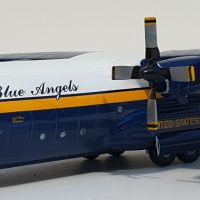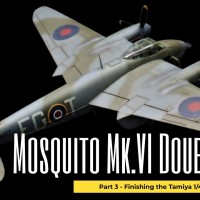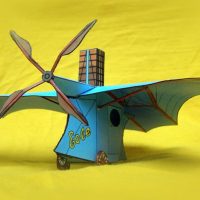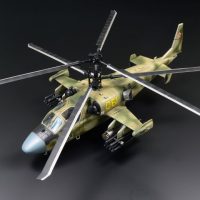An early Fury
In my previous article on the Hawker Fury biplane and the available models I mentioned the early first contract Furies of No. 43 Squadron. These were different to the usual Fury with 4 individual cabane struts and I was quite intrigued by the prospect of building one. As a conversion, it's quite easy especially if one is familiar with Amodel kits. The early Furies started to enter service in April 1931 with the first two going to the AAEE (as was standard practice for the time). The first Furies to arrive at No. 43 Squadron were K1942 and K1943 with the rest of the 17 aircraft from the contract all having been delivered by the end of the month. It was very rapidly realised that the cabane struts needed strengthening and that the cabane strut incidence wires were not sufficient. No information has emerged on when change occurred or what generated it but a diagonal strut replaced the wires and was retrofitted to the early aircraft. It may have come from Squadron experience or AAEE tests. Whatever the origin the change was introduced with the second contract run in 1932. The early Furies continued in service with the modification and some enjoyed long careers. As I mentioned the conversion is quite simple and produces a rather unique version of the Hawker Fury. As far as I can recall I've never actually seen any other model of this variation though.
The marking controversy and decals
No. 43 Squadron aircraft carried a checkered squadron identification scheme which up until the Fury was black and white checks. With the Furies the white checks were omitted and only the black squares painted on the aircraft. Some sources claim the white checks were added later but photographic evidence is lacking for this claim. A careful examination of Furies in No. 43 Squadron service show check panels without white but careful examination is needed as photographs can give the optical illusion of white. Furthermore, Lumsden and Thetford ('On Silver Wings') only mention black squares. Rather this is one of the interwar fighter marking myths just like the No. 74 Squadron upper wing markings on the Gauntlet. Two companies do decals for No. 43 Squadron Furies, Print Scale and APC decals.
The less said about Print Scale's effort the better - it is riddled with the kind of errors we've come to know and love from Print Scale. The example chosen is K1930 and this is marked as the Squadron Leader's aircraft which it never was (that was K1933). The Squadron Leader is listed as W.E. Bryant but he was squadron leader for No. 25 Squadron and never served with No. 43 Squadron. Of course, it includes white and black checks. APC decals do repops of Matchbox decals but with their Fury decals they've omitted the white squares and one just gets the black squares. The Matchbox kit represented K1938 in later life and so the decals are very accurate. A little bit of cutting allows one to do any of No. 43 Squadron's aircraft but one does need to source serial numbers and early roundels from other sheets. The Modeldecal sheets are still available and provide all that is needed.
The model
I used the Amodel 1/72 kit which I recommend over the Matchbox version. The former is more detailed and accurate and lends itself well to the conversion. Detail is very refined and delicate and you get the ability to add the tail offset. The molds are getting old though and considerable clean up is needed. Take your time with this as it rewards the effort. I also detailed the cockpit and apart from the cabane strut change added the fabric finish just rear of the cockpit (later Furies had a smooth plywood section) and omitted a pair of tailplane bracing wires (which weren't present on the early Furies). I left off the gun sights which was often the case for Furies especially if they were on acrobatic duty. If you want to include gunsights you need both the ring and bead sight and the Aldis sight as they were carried at the same time.
Fitting the upper wing is relatively easy. Deepen and widen the location holes for the interplane struts first. Then attach the interplane struts with quick drying Tamiya cement making sure the alignment is set at 60 degrees from the horizontal. Let them set for a while and then attach the upper wing, again with quick drying cement. Next add the individual cabane struts which are basically the kit struts with the diagonal cut off. It makes for a surprisingly sturdy assembly. I added the 3 degree tail offset and the control wires which are fiddly and difficult. Rigging was 0.2 mm SBS RAF wire which looks just right. Once again, the metal portions were ultra bright bare metal foiled with Bandai chrome paint for the difficult parts. The dope finish was Tamiya X-11 enamel which matches the photos very nicely. My particular aircraft K1929 belonged to B Flight and so the wheel discs and propeller boss were painted in gloss yellow. For early Furies propeller blades should be uniform brown later Furies were grey.
Conclusion
A very pleasant build. The Amodel kit is far superior to the Matchbox offering and builds into a very impressive replica. It's worth the effort to get the No. 43 Squadron markings right and the APC decal set isn't expensive. Despite being continuous film the APC decals go on well and really do look the part. I enjoyed this conversion immensely and have a pretty unique Hawker Fury for my collection.









Nice looking model. Amodels aren't the easiest builds... by reputation.
Thanks ever so much, Dan - they do need a bit of care but I've always found them to generate nice results.
Excellent conversion and equally excellent result, Christopher! A very charming, unique model!
Excellent, very informative article as well!
Many, many thanks Spiros - the Furies are a charming little biplane and not too difficult.
A very nice result, Christopher @christopher
Great and informative article as well, thanks for sharing.
Thanks very much for the kind comments John (@johnb).
Great info on the Fury. A great result on the model.
That's very kind of you to say so - many thanks Tom.
A neat looking Fury, Christopher, with an equally interesting narrative. I recall the first plastic model that I built as a 12 year old was an Airfix fury, it did not survive for long.
Many thanks for the kind comments Ian. I never built the Airfix Fury but I do remember the Matchbox version coming out and how exciting that was.
Nicely done Christopher, well presented.
Thanks kindly Allan, much appreciated.
A well-done project - looks great!
Many, many thanks Greg!